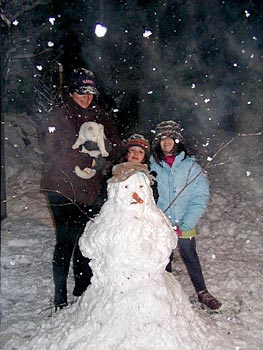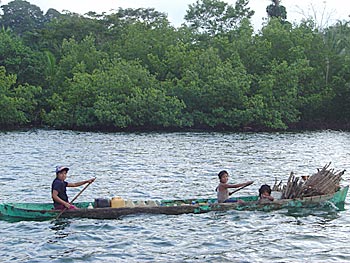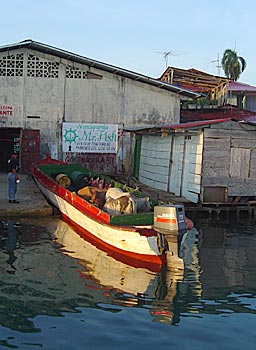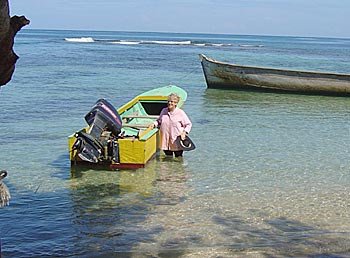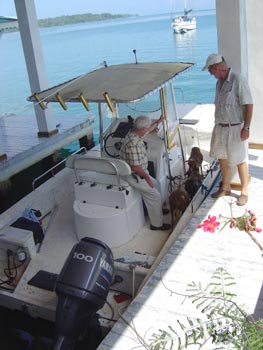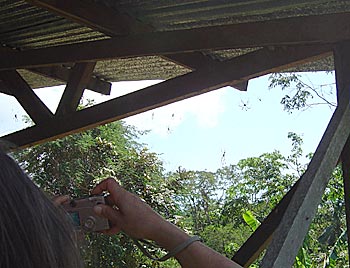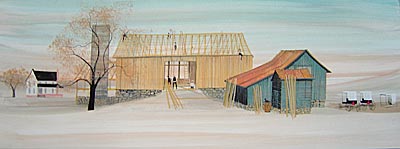Send this e-mail letter to a friend:
Hola Amigos,
Como estan? (How are you doing? This is the plural. If I was addressing only one of you I would say "Como esta?") Often I hear people say "Que tal," which is similar to "How is it going?"
Enough Spanish for today. My thoughts are focused on Italy. I am showing you a photo Becky sent me from Cortona on Friday. In the past, snow has been rare in Cortona and when it has come, it has soon disappeared. Along with everyone else in the North, the Cortonese have been experiencing phenomenal cold.
A Tuscan rarity. Snow seldom settles in Cortona.The weather in Cortona will not be like this in October when we arrive for the Society tour of the region. It will be fall and the temperature may be variable but not extreme in either direction, hot or cold.
If you are planning on being with us you need to confirm your reservation now. There are only a few places left. We are restricted to using one bus because of the number of rooms we can secure in the hotels and the amount of tables in our favorite restaurants.
If you are coming, please call Lance at the Society Office 540-943-5678 as soon as possible and complete your registration.
Becky, Roberto and their local travel agent have put together a unique tour. I say unique because it truly is one of a kind and not what you would find elsewhere. You will be going behind doors that are normally closed to tourists. You will be meeting Italians on a social basis and getting a flavor of their life not experienced by the average package tour traveler. We will have a fun time and a learning time.
This week we are showing you some of the local boats, starting with the basic log canoe. We took these photos for you this week.
Three Panamanian children return home with water and firewood.The three Indian children returning home with bottles of fresh spring water and firewood is typical of what we see when visiting the farm. Note the dog in the front which is with them to safeguard the boat, while the children search for the firewood.
A meat boat delivering food in Panama.The canoes hollowed from logs are called cayucus and can vary in size, as you can see from the meat boat which came one morning to the dock beside our house on the main island. The bigger cayucus still come mostly from one hollowed tree but have their sides built up with planks of wood so they can carry heavy cargos. These are powered by outboard motors.
Pat shows the style of boat often used to transport tourists.The yellow boat with me standing beside it was built to be lighter and faster than the cayucus. These boats are often used to take small parties of tourists to beaches on other islands. I particularly like the shade of yellow and will use it in a painting some time in the future.
The last boat we show is not a local boat. It is our boat with three lambs aboard about to be taken to the farm by Malcolm. He is replacing the two lambs killed by the neighbor's dog with three hembra (female) lambs. He and Andres want to build the flock to forty because then there will be sufficient sheep to keep the grass down without the need to cut by hand.
Malcolm prepares to take three lambs to the farm.In another photo I am pointing out spiders that cover the upper open spaces at the farm pig pen. We take great care not to disturb these creatures and their webs. Without them, the pigs would be menaced by flying insects. The spiders guarding the pigs are harmless to humans but there are other spiders on the farm that are dangerous and their bite could kill if not treated. There is also a spitting ant that can blind dogs with its spit.
Some of the spiders on the farm are beneficial to the farm animals and not dangerous to humans.Now to this week's painting. I am showing you the start of a painting of the raising of a bank barn. This painting will be on the invitation to the next Open House at my barn/studio and Museum (April 23rd-25th). As you can see I have a long way to go yet. Next week you see it near to completion.
Barn raisings are symbolic of the Christian spirit. For more than thirty years I have spoken through my art of the value of the Amish and Mennonite ethics of hard work, respect for the land and of love of family and of neighbors. The Barn raising is the most obvious example of neighborly love. When a fire destroys an Amish barn, neighbors immediately set about rebuilding. The men and boys do the building and the women and girls prepare and cook the meals. Working on this painting, I have imagined the good fellowship, the humor and the story telling as neighbors meet for this tradition of giving. It is an example of how a disaster unites people in greater understanding and fellowship.
Work in progress: barn raising for the next Museum Barn Show.
Pat has completed this painting which will soon be published as a print.In breaks between working on this piece, I have been painting small scenes of babies in baskets. I am doing one for each month of the year. I have also completed a small landscape of a farmhouse with two Canada geese.
Hasta proxima semana. (Until next week).
Love,
Pat
The Moss
Portfolio
HC 69 Box 17118 Poplar Grove Lane
Mathews, VA 23109
(800) 430-1320
©P. Buckley Moss 2004
